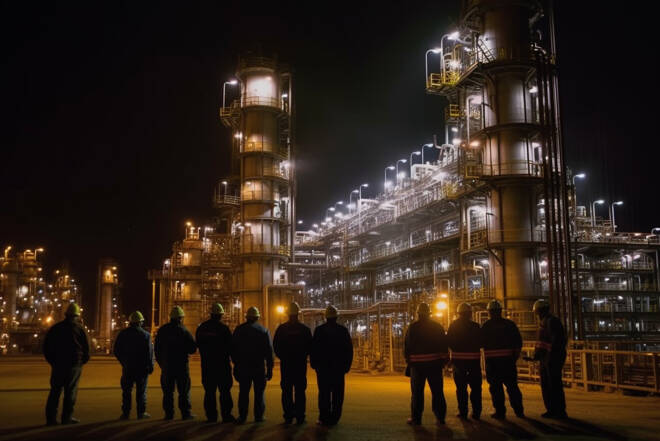Advertisement
Advertisement
Natural Gas: Is the LNG Price Surge Sustainable? A Deeper Dive
By:
Natural gas analysts note that initial strikes target Chevron's efficiency, not production, casting doubt on a prolonged LNG price rally.
Highlights
- Initial strikes not severely impacting Chevron production.
- Japanese stakeholders weigh alternative supply options.
- European gas prices volatile despite high storage.
The Australian Strike’s Implications for the LNG Market
The recent strike in Australia and ensuing market dynamics have raised questions about the potential for a significant rally in LNG prices. However, a deeper look into the situation suggests that any notable short-term gains may stem from short-covering rather than a fundamental shift in supply and demand.
Initial Impact of the Strikes
On Friday, Saul Kavonic, an energy analyst at Credit Suisse Group AG, noted that the initial strikes “appear lower level, designed to create costs and inefficiencies for Chevron, but not yet impact production materially.” While the situation currently remains under control, the real test lies in the coming days. According to Energy Aspects Ltd. analyst Leo Kabouche, the situation could alter if a compromise isn’t reached by September 14.
Japanese Buyers Monitor Closely
Japan, being the primary purchaser of LNG from Chevron’s Australian plants, is keeping a watchful eye. Major stakeholders like Osaka Gas Co. and Tokyo Gas Co. are already considering their options. Osaka Gas Co. has expressed that they will ponder alternatives if their supply from Gorgon, in which they have a stake, is impacted. Meanwhile, Tokyo Gas Co. is assessing the potential influence on its LNG procurement.
Tohoku Electric Power Co., which has an agreement with Wheatstone, remains optimistic. A spokesperson commented that they don’t foresee any impact on their procurement plans for now.
European Market Dynamics
The recent developments have also made waves in European markets. As of recent data, Dutch front-month gas had risen by 11% to €36.34 a megawatt-hour. Similarly, spot LNG in North Asia for October deliveries saw an increase of 5.3%. Interestingly, while Europe rarely sources fuel from Australia, any reduction in LNG shipments to Asia could intensify competition for alternative cargoes.
This scenario might seem alarming, but it’s crucial to put things into perspective. Even after the recent surge, Europe’s gas prices remain significantly below last year’s peak levels. They are, however, still higher compared to pre-crisis figures, indicating that volatility in the market is expected to persist.
One might wonder why Europe’s gas storage, currently about 93% full, doesn’t alleviate concerns. The reality is, these inventories aren’t structured to cater to the entirety of winter consumption. The European region, after the significant reduction in pipeline gas from Russia in 2022, has grown even more reliant on consistent LNG shipments.
Short-Covering Over a Prolonged Rally
Given the uncertainty around the strike and the looming September 14 deadline for a compromise, it seems unlikely that the recent disruptions will be enough to fuel a prolonged rally in LNG prices. Most of the gains we are seeing now may well be attributed to short-covering, rather than an underlying change in supply and demand dynamics.
The notion that hotter temperatures in September would significantly affect this outlook also appears unfounded. Any substantial short-term gains are more likely to be a knee-jerk reaction to the strikes rather than a sustained trend, especially given Europe’s relatively stable inventory levels and the contingency plans of key Asian buyers.
In summary, while strikes and seasonal temperatures may cause momentary fluctuations, they are unlikely to contribute to any long-term rally in the energy markets. Short-covering, on the other hand, may be behind the significant short-term gains, making the current situation more of a speculative bubble than a structural shift.
About the Author
James Hyerczykauthor
James Hyerczyk is a U.S. based seasoned technical analyst and educator with over 40 years of experience in market analysis and trading, specializing in chart patterns and price movement. He is the author of two books on technical analysis and has a background in both futures and stock markets.
Advertisement
